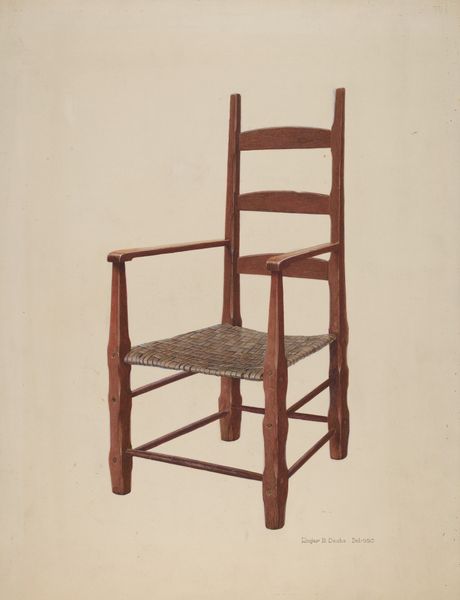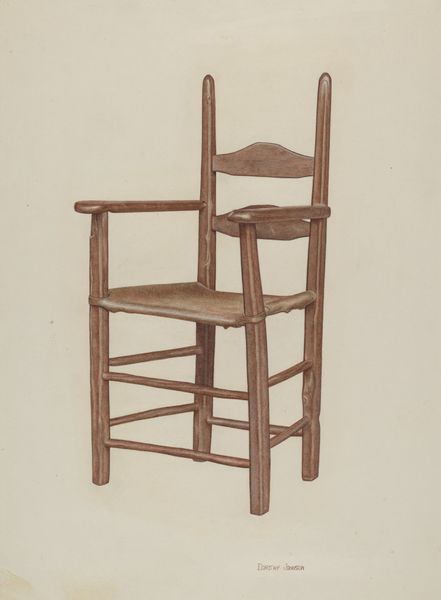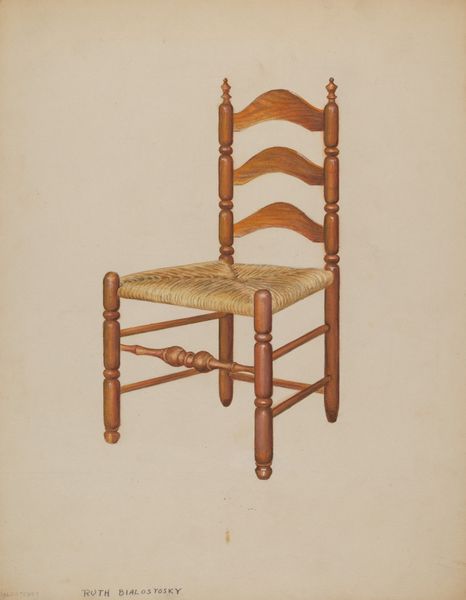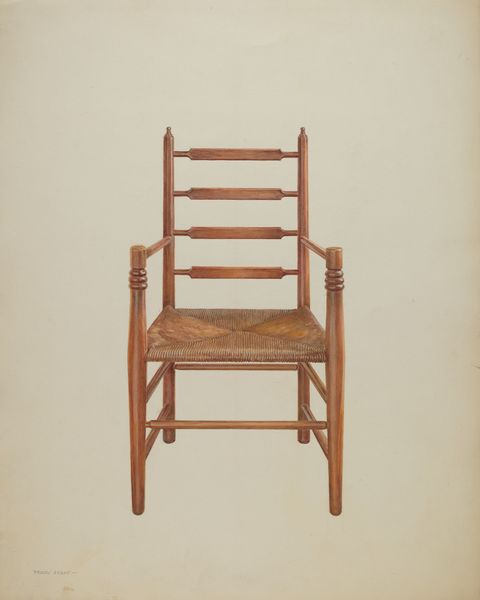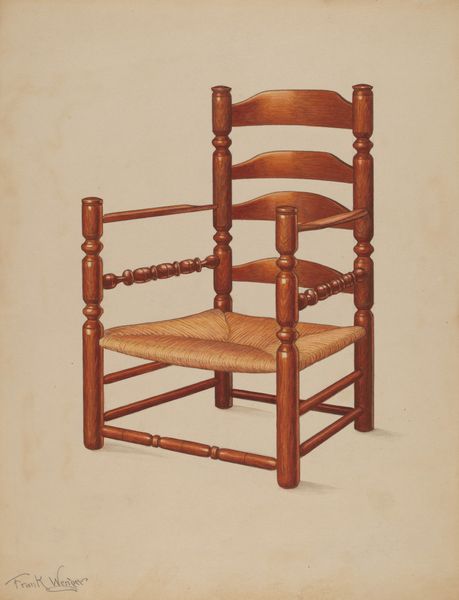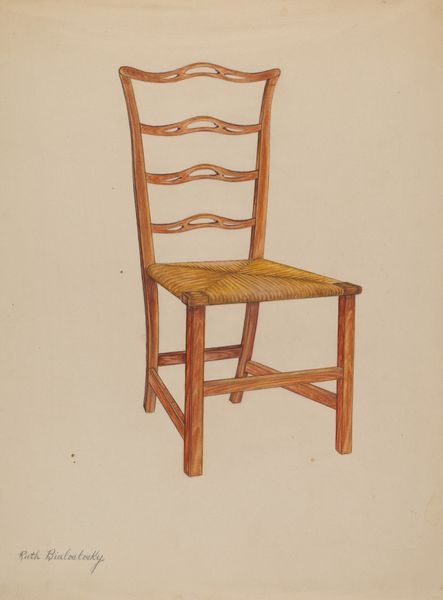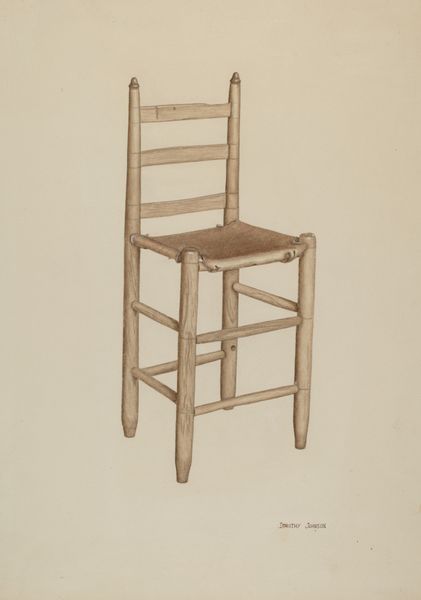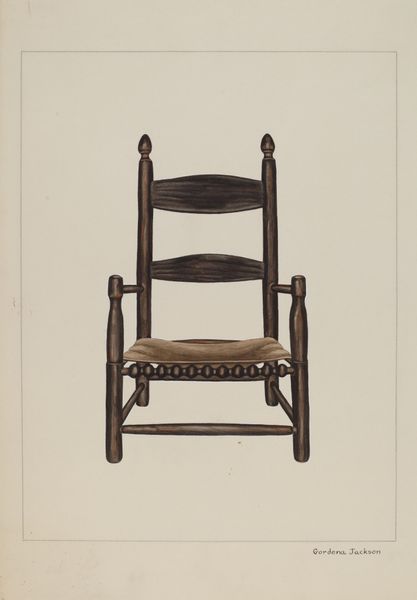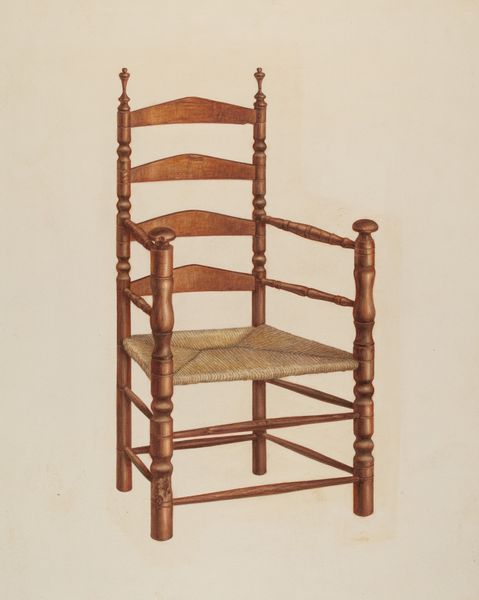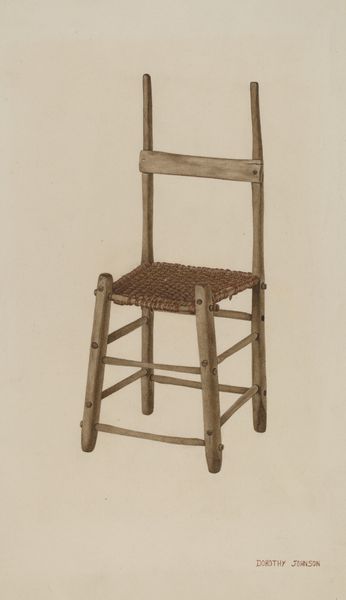
drawing, paper, watercolor
#
drawing
#
water colours
#
paper
#
watercolor
#
academic-art
#
watercolor
Dimensions: overall: 43.5 x 35.5 cm (17 1/8 x 14 in.) Original IAD Object: none given
Copyright: National Gallery of Art: CC0 1.0
Curator: This is Rolland Livingstone's "Corner Chair," a watercolor on paper created in 1941. Its precision is quite striking, wouldn't you agree? Editor: My initial impression is its domestic tranquility; the chair feels both familiar and unassuming, despite its very formal presentation here. Curator: Precisely! Note how Livingstone deploys watercolor techniques to articulate the chair's textures: the woven seat's complex pattern juxtaposed against the smooth wooden frame. The use of light and shadow delineates form, adhering strictly to academic principles. Editor: And yet, it's the material story I find more compelling. Consider the labor involved—from the harvesting and preparation of the straw to the woodworking of the frame. Each element speaks of handcraft, of a specific skill set developed within a community. Curator: An intriguing point. However, I'm drawn more to the spatial dynamics created by the chair's corner construction. The converging lines establish a clear sense of perspective and depth, while the object's geometric form introduces a kind of restrained elegance. Editor: But the elegance itself derives from that unadorned construction. It is precisely the everyday, functional character of the chair, the very lack of pretension in its making that contributes to its appeal. One might consider the socio-economic conditions under which such chairs were commonly produced and used. Curator: I grant that the work embodies a kind of vernacular aesthetic, but its formal rigor cannot be overlooked. Livingstone focuses our attention on line, form, and texture—qualities that elevate the quotidian to something worthy of careful contemplation. The academic application here is not simply copying the real. Editor: For me, the true value lies not just in its aesthetic form, but in how Livingstone, through his exacting rendition, prompts us to consider the hidden economies of production and the values invested in these handmade objects. I’m also considering its domestic positioning; such chairs speak of cozy rooms, maybe a spot to take off muddy boots and sit. Curator: Your material analysis sheds a fresh perspective. This deepens the complexity and inherent value we see today in such a carefully presented composition. Editor: Indeed, understanding its materiality and its place can reshape how we understand and relate to art overall.
Comments
No comments
Be the first to comment and join the conversation on the ultimate creative platform.

